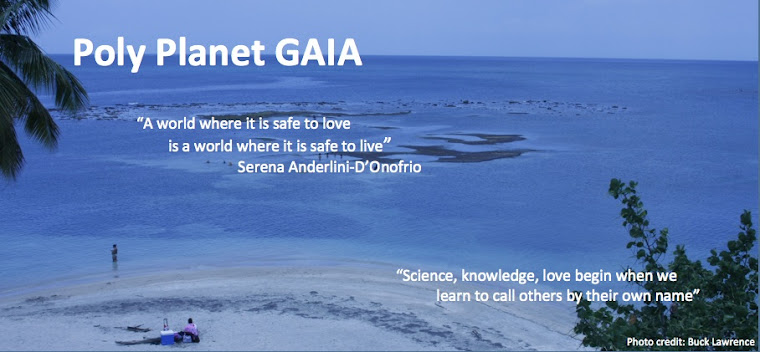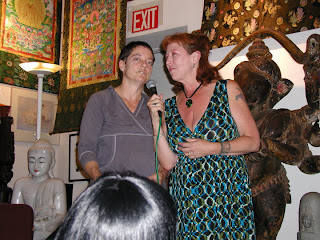Friends keep telling me that people don't understand what I mean. "She uses strange words," they say, or at least, "she uses words in a strange way. Why does she do that? What does she really mean?"
"That's the point," I think to myself, very shy, very humbled, very timid, "making up new words, new phrases, using words that are unfamiliar, making familiar words sound new."
That's the power of words, the power of literature, if you will. What I was trained in. (Arhhhhhg, what a mistake to presume one can relinquish some ignorance!)
"These people," I think, "they really want it easy. Not only I learned their language so I can speak to them. But then if I use words of their language that for one reason or another sound queasy, they become suspicious of me. There's no way to do right by them!"
"What's this fear?" Fear of words. One cannot be afraid of words. Words are NOT things. They only represent things. Or do they? Can words also MAKE things? Can they CHANGE things? Can they affect, transform, reinterpret, create REALITY?
Of course they can. All poets are keenly aware of this. Otherwise why would they spend time playing with words?
So, a case in point is this video clip. From The Wisdom of Love, a double book launch Deborah Taj Anapol and me held at Open Secret Bookstore on June 22, 2010. It's a bit late to post. I know. Took a long time to figure, with us being a team of wise, wise, wise people. So ancient is our wisdom that we're not all that familiar with latest tech stuff for social media. But we get it eventually. And for this clip, we owe courtesy to Steve Hoffman of Oakaland, California, who shot, cut, and reduced for us.
So, what's the fun with words here? Well, "RESOURCES." People in ecology, in environmental science talk about 'resources,' right? "Limited resources." "Sources of energy that are 'renewable'," as in wind, solar, hydro: ways to create power that generate themselves again every day, that are commonly owned/shared. That don't involve pollution or extinction of the source when it's most needed. See what's happening with the oil spill. Easy oil is almost gone now. And we're ever more dependent on it. While it's also turning our amiable hostess Gaia into an oven. Ouch! I'm cooking! I'm being cooked!
So then, resources is the issue, right? Why can't we BE the resources we seek? Sounds Oedipal? It is! What happens if we begin to think of ourselves as the resources we need? What if we begin to practice BEING resources for each other?
A whole lot! Big shift in thinking. Now we don't need a lot of resources. We need to interpret each other AS resources. And what can we trade that is, as Stan Dale would say, "free"? We can trade LOVE, or 'amor,' or 'amore,' or 'amour' as those hopelessly Romantic, romance language people would say.
Then we see that being POLYAMOROUS, being capable, by nurture, by nature (who knows?) of trading these AMOROUS RESOURCES with a whole bunch of people is NOT a dangerous perversion, is NOT a problem, is NOT a liability, is NOT a sign of being promiscuous or a misfit. IT IS ACTUALLY A VIRTUE!!!
Yes, you heard me. BEING POLY IS ACTUALLY A VIRTUE! It should be rewarded as a free recycling system, as a national forest deep-ecology biodiversity sustaining nurturing ecosystem. It should be cause for being nominated for the Nobel Prize for Peace!
"But wait a minute," you must be saying, "is this for real?" "Sounds like a trick to justify some wicked perversion."
Well, I leave the final judgment to you. It's on the video. Somebody in the audience at Open Secret asked "what's the connection between Gaia the living planet and open love, open relating?"
That's how I explained it!
Go ahead and listen . . . .
Then, if you like what you hear, you can get more info from the source of my wisdom, Gaia and the New Politics of Love. This book was inspired by one who IS the pleasure he seeks. Watch out for the book's new digital edition, coming soon. Meanwhile, get your paper version and start practicing love's wisdom.
There will be more posts and clips. The momentous series of events we held in Norther California in June-early July will be unfolding digitally as we post clips and snippets, with comments.
We look forward to YOUR comments too!
Namaste,
Gaia
a.k.a. Serena Anderlini-D'Onofrio













